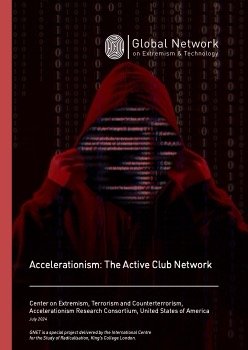By Primitivo III Cabanes Ragandang
This report examines online youth‐led initiatives involved in challenging violent extremism (CVE).
It focuses on the 2013–2023 online presence of 13 youth organisations, namely: KRIS (Philippines), Youth for Peace Movement Davao de Oro (Philippines), United Voice for Peace Network Inc. (Philippines), Global Peace Youth (Philippines), Students Against Violence Everywhere, Paiman Alumni Trust, Sri Lanka Unites, Youth for Peace (Cambodia), Sambisig, Team Pakigsandurot, MasterPeace, Youth for Peace Philippines Cordillera Youth Brigade and College of Youth Activism and Development.
Based on data scraped from more than 130 social media posts, the report highlights the dynamics of youth‐led CVE efforts online, and discusses strategic planning, content creation and organisational challenges.
The study identifies the dual approach of young people in CVE work across both online and offline spaces. The predominant use of digital platforms to document offline activities suggests that for many, the online platform is secondary, pointing to the challenges of internet access in certain regions of Asia.
Limited internet access in marginalised communities emerges as a significant barrier, underlining the need for more inclusive online participation. Organisational hurdles include communication issues, resource constraints, team dynamics and visibility challenges, particularly where messaging is too localised.
This report recommends that CVE youth organisations be given more training in online content creation and social media literacy. It suggests prioritising and supporting offline activities to improve sustainability, and proposes collaborative online spaces to boost engagement. The report also recommends that tech companies broaden their existing community systems to amplify and lend credibility to CVE‐related content on social media platforms.
The report shows that online youth‐led CVE initiatives in Asia are not explicitly labelled as CVE. They have a variety of names but allare geared towards challenging ideas and acts that are violent and extreme in nature.
In some initiatives, young people directly condemn violent forms and acts of extremism. Other initiatives advocate social change in a preventive sense, with young people addressing factors that contribute to violence and extremist ideas.
Another type of initiative involves Asian youths promoting positive values and behaviours as a means of CVE, advocating positive messaging, active participation and good citizenship. This approach encourages positive behaviour as a counter to extremist ideologies.
The report concludes with a recommendation that tech companies should support existing youth CVE initiatives, rather than creating new ones. This support might include establishing a support network for these initiatives and organising conferences to gather and connect young CVE advocates across the region. Strengthening communication channels with youth groups and fostering collaborative online spaces would improve coordination and content dissemination.
Modifying search engine functions would make it easier to identify relevant groups. Using community systems to endorse CVE‐related content would boost credibility, while supporting regulatory duties with AI (artificial intelligence) capabilities would make content moderation easier. Strengthening proactive measures to safeguard online spaces and reduce harmful influences requires addressing emerging threats such as domestic terrorism and extremist ideologies.
London: The Global Network on Extremism and Technology (GNET) , 2024. 44p.







